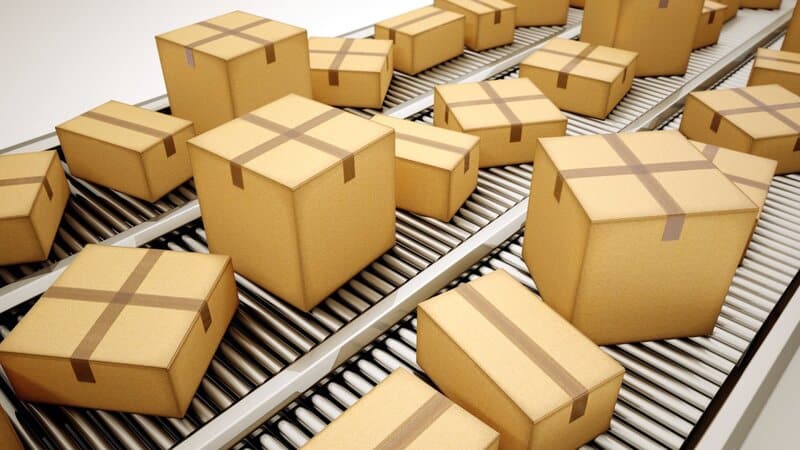Last Updated on April 23, 2023 by Packoi Team
A digital sample involves printing a product sample using a digital printer to give a reasonable representation of the final product. It shows the overall idea of the product color, text, size, and basic layout.
On the other hand, a sample of mass cargo is the conventional way of sampling and inspecting products. It involves taking small portions of “samples” of the large shipment and giving them to potential consumers.
Sampling is a pertinent practice in any production process as it helps to prevent businesses from irksome surprises when the products arrive. The main objective of product sampling is to ensure your clients receive a product that meets their expectations.
A product that falls short of clients’ specifications and expectations will definitely ruin your business. Full production cannot start until the sampling process approves your product and the client is satisfied.
This article will discuss sampling methods and plans, their advantages and disadvantages, their differences, and some application examples.
What Is Sampling Plan?

Quality control of products is an indispensable activity in production, and it is essential to ensure products meet the quality standards for consumption. While quality inspection is a key part of the production, doing it 100 percent on everything is unsustainable, costly, and ineffective, especially in high-volume production lines.
A sampling plan helps businesses to assess and ascertain the quality of products by evaluating only a proportion of the products and using the assessment results to infer levels of quality of the overall shipment. It is a statistical technique that helps decide whether you can reject or accept a product based on the assessment results.
This technique makes businesses more efficient and saves a lot of undesirable costs. The main purpose of sampling plans is to give a representative view of the quality of products in the review.
As you consider a quality control plan, planning ahead is always crucial. Planning gives you an insight into how to approach your goals and with what techniques while bringing out key considerations as you determine the suitable processes. Here are some important considerations to determine your appropriate sampling plan:
- Business goals and objectives.
- Pre-existing quality control policies and standards.
- Accuracy levels required and reliability of your estimates.
- Percentage of acceptable defects and the actual sample size versus safe sample components.
- Your potential customer. Some customers do not accept any level of defect.
What Does an Effective Product Sampling Look Like?

As stated earlier, product sampling is crucial for a successful business. But how do you know your product sampling is effective? Well, the following characteristics determine an effective sampling method:
- Driving sales at the point of purchase. An effective product sampling can encourage product trials by customers and compel them to order the sampled item from the supplier.
- Customer response is another indication of an effective sampling. Through response, suppliers can respond to customer needs and allow them to try the sampled product.
- An effective product sampling enhances brand awareness. The primary purpose of experimental and event marketing is to make your brand known before customers visit your product stand.
- Brand value and customer retention. A product sampling method that nurtures relationships with customers effectively retains customers, making them order products in the future while referring their friends.
- Valuable feedback from customers. Product sampling is an effective way to obtain important data from customer feedback. Collecting such useful information will help the brand address specific issues before customers switch to another supplier.
What Is Digital Sample?
A digital sample entails a digital representation of the actual product, printed or shared online with customers through a digital connection. A digital sample involves presenting your product to consumers optimally using analytics and consumer attributes, and it is delivered through a marketing platform or e-stores.
Benefits and Limitations of Digital Sample
The modern world has embraced technology, providing a convenient way for connecting businesses and consumers.
Benefits of Embracing Digital Sampling
- Cost-effectiveness. Digital sampling is cost-effective since there are no expenses for shipping or organizing a physical meeting with customers.
- With digital sampling, businesses can target their target markets; therefore, they can only offer their samples to consumers through an elaborate plan.
- Digital samples have boosted business sales while delivering higher customer satisfaction scores.
- The platforms through which digital samples are delivered offer great opportunities for better business-customer relationships and the retention of a loyal consumer base.
- The data analytics and valuable feedback through digital sampling provide a precise way to keep track of business performance.
- There is no wastage in digital sampling. There is no likelihood of sampling customers who are probably not interested because consumers must actively take action in the sampling activity.
Limitations of Digital Sample
- Digital sampling may sometimes be costly.
- With digital sampling, there is no superior brand experience as face-to-face product sampling meetings in conventional sampling.

What Types of Printing Products Are Digital Samples Suited for?
As you consider undertaking a new project, a digital sample is crucial for sampling purposes. This gives a rough idea of the appearance of your final product. Some of the printing products that may require digital sampling include catalogs, booklet printing, comic books, guidebooks, and more.
What Is a Sample of Mass Cargo?
This is the traditional way of sampling products, involving product testers or take-home samples by giving customers a small portion of the entire batch, even if they are not interested in the product. Business offer samples of the items they already have in their stores, hoping to entice them to purchase more.
Benefits and Limitations of Sample of Mass Cargo
Benefits of Sample of Mass Cargo
- The sample of the mass cargo approach has proven to boost sales when it is strategically undertaken.
- Face-to-face interaction with customers is a great way to compel them to try your product.
- Mass cargo sampling samples have superior brand experience due to the direct brand-customer interaction.
- You can sample many consumers without conducting research.
Limitations of Sample of Mass Cargo
- It is costly since you have to plan for organizing marketing events.
- Since there is no prior research, the sampling campaign may be inefficient as the many sampled consumers may not be interested in the product.
- As soon as the consumers leave the store, there is no way to keep them on hold and update them about the product.
Differences between Digital Sample and Sample of Mass Cargo
- While a digital sample is a printed representation of the product to be produced in bulk, a sample of mass cargo is a small portion of the overall shipment or products already in store.
- In the digital sample, it is necessary to research the target market and choose based on AI algorithms before sampling. In contrast, research is not required in samples of mass cargo since sampled consumers randomly visit the store.
- There is high uncertainty in getting the target market by giving resources without research. The time spent and budget for giving free goods in a sample of mass cargo is “resource wastage” if compared to outcome sales. On the other hand, the digital sample is more cost-effective for a precise selection of target customers.
- In a sample of mass cargo, connection with the consumers is lost once they try the product. While in the digital sample, the brand has clients’ information from the online platform and can connect with them anytime.
- Since the sample of mass cargo is more into giving free products, the customers here are not interested in giving real feedback but complementing the free goods because they do not have much time to interact with the product. On the other hand, digital sample allows customers to test the sample product at their comfort and give feedback through the sampling platform where all customer data is available.

How to Choose a Suitable Type of product sampling?
We all agree that product sampling is crucial for a successful business. But as you plan for business strategies, ask yourself how you can get a suitable product sampling for your goods. Here are some techniques that can help you end up with a befitting product sampling strategy:
Determining Sample Quantity and Quality
While setting up a product sampling campaign in your production line, it is important to determine the sample quality (the number of times the sample is taken from the batch) and their quality accepted by sampling policies and capable of undergoing examination. This is crucial since the samples to be inspected should always meet the safety standards for the sampling procedure.
Determining the Appropriate Sample Size
The sample size adequate to minimize sampling errors can be determined depending on several parameters; population proportion, confidence level, and confidence interval.
The sample size refers to the units of the products from the same lot (of items produced under the same conditions) included in the sampling procedure to achieve sampling goals.
There are three ways of determining sample size: AQL (Acceptance Quality Limit), LQ (Limiting Quality), and Lot skipping in sampling inspection with adjustments.
Sampling Tools and Equipment
Sampling tools and equipment are specifically designed to accurately serve the intended purpose and preserve the quality of the sampled goods. A sampling tool must meet the following requirements to serve the general sampling purpose:
- Strong for handling operations.
- Easy to clean. Always be clean before and after use, and it must be cleaned as per specified instructions.
- All its parts must be resistant to the effects of the sampled goods, including chemicals, and capable of resisting the effects of the cleaning substances.
- And must comply with the safety requirements.
The following tools may be used depending on the type of product being sampled:
- Sampling liquids: piston-tube sampler, sampling scoops, dipping vessels, pipette samplers, vacuum pumps, etc.
- Sampling solids (in granule or powder form): spear samplers, zone samplers, trowels, hand-drill samplers, spiral samplers, etc.
- Gas sampling: a metal cylinder
- Other general tools include knives, stirrers, cutters, scissors, sealing tapes, tongs, and more.

What Should You Consider While Packaging and Loading?
Product packaging plays an important role by protecting items from physical damage and preserving the content’s quality. Here are key considerations in packaging and loading your products.
Containers and Materials Used in Packaging
The container you use to package your goods is important to their safety and quality. The container should be made of materials that are resistant to the effects of products and cannot cause harm to your goods. Each kind of product has a specific container that accurately serves its purpose.
A container made of materials that react when in contact with goods will definitely alter the quality of products. Product containers can be made from various materials such as plastics, paper, cardboard, metal, and more—the container you should effectively support and protect the products during shipment.
Essential Balance between quantity and safety
As you load your products into packages, quantity and safety factors should be in place. The quantity you put in a container should not threaten the product’s safety and those involved in the shipment process.
This is because every container is designed to hold a certain amount of content, and overloading threatens safety. Therefore, you should ensure striking a balance between quantity and safety. This can be achieved by calculating Verified Gross Mass (VGM) before loading containers on a shipping vessel.
Loading operations and shipment procedures
Product handling is a central aspect of logistics management. Cargo safety is key in ensuring successful logistics management; thus, various measures are taken in loading and shipment to ensure goods’ protection and quality handling. These measures include:
- Ensuring there is a robust logistics and advanced safety systems.
- Inspecting containers and ensuring cargo integrity through seals and locks.
- Cargo identification and verification systems through technology in logistics management.
- Accurate cargo documentation, including weighing and verifying the total mass of the load.
- Security systems in loading and storage facilities, e.g., cc cameras.
- Proper safety equipment ensures the products and people in the supply chain are safe. e.g., fire extinguishers and safe rooms in shipping vessels.
Conclusion
Product sampling is crucial in production and fostering loyalty between businesses and consumers. There are two types of sampling goods; digital sampling (digital sample) and conventional product sampling (through a sample of mass cargo).
Because the modern world has embraced technology, digital sampling has become common worldwide thanks to its efficiency and cost-effectiveness. Before going for either method, you need to have a plan for sampling your goods.
Also, it would be best if you considered some important aspects before choosing the best sampling method. By doing so, your business is bound to succeed as long as the sampling procedures you apply follow the legislation and product inspection policies to detail.
Discover the Perfect Solution for Your Business with Packoi
Although Packoi is not a product sampling company, it can help your product sampling become seamless and cost-effective. Packoi will help you customize the best packaging with desired attributes to meet your consumer needs during sampling.
Get quality customized packages that sell your brand during sampling, enhancing its awareness and driving sales from Packoi. For more information, contact us!



